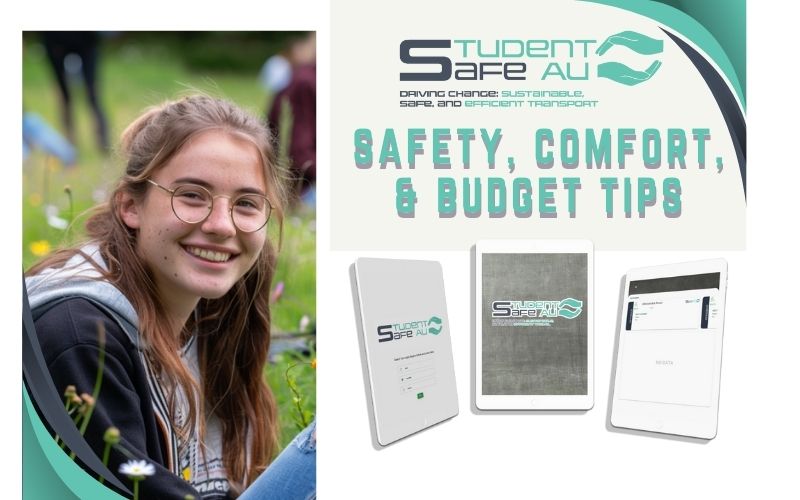How to Choose the Best Group School Transport for a School Field Trip
A School field trip isn’t just a fun excursion but integral to educational development, offering real-world experiences and learning opportunities outside the classroom. However, one of the biggest challenges in organising these trips is determining the best mode of group school transport. Safety, comfort, budget, and environmental impact are just a few factors. This blog aims to guide educators and school administrators through the intricate process of selecting the most suitable transport for school field trip, ensuring a safe, enjoyable, and educational experience for all students. Simple Change, Big Impact: Transform Your School!
Understanding the Needs of Your Group
The number of participants is the primary determinant of your school transport needs. A precise headcount is essential, including students, teachers, and any accompanying staff. This count not only dictates the size of the vehicle but also impacts the overall budget and logistics planning.
Special Requirements: Catering to the diverse needs of all students, especially those with disabilities, is crucial. Ensuring accessible school transportation, like buses with wheelchair lifts, and considering other special requirements like allergy-friendly environments or space for medical equipment is essential for inclusivity.
Trip Distance: The trip’s destination and duration influence the transport choice. Shorter trips might be more flexible with options like public transport, while longer journeys require vehicles equipped for comfort and reliability over extended periods.
Evaluating Transportation Options
Buses and Coaches for student transport: Ideal for larger groups, these vehicles range from standard school buses to luxury coaches with amenities like air conditioning, restrooms, and Wi-Fi. Consider the route’s feasibility for large vehicles, the availability of parking spaces at the destination, and whether the amenities justify the additional cost. School transportation.
Vans and Mini-Buses are excellent choices for smaller groups or shorter distances. They offer excellent manoeuvrability and can be more cost-effective. However, they may need more spacious seating and more extensive bus storage.
Public Transport: Utilising local buses or trains can be an educational experience, teaching students about public transit systems. However, this requires meticulous schedule planning and may not be feasible for remote or less accessible locations.
Walking and Cycling: These options promote health and environmental awareness and are great for short, local trips. However, they require careful consideration of the route’s safety, weather conditions, and students’ physical capabilities.

Safety First
Vehicle Safety Standards: Thoroughly vet school transportation provider for their adherence to safety standards. This includes regular vehicle maintenance checks, availability of safety equipment like seat belts and first-aid kits, and compliance with all relevant transportation laws and regulations.
Qualified Drivers: It is crucial to ensure the driver is licensed and experienced, has undergone background checks, and is trained in managing young passengers. The driver’s role extends beyond just driving; they contribute to the overall safety and well-being of the students.
Pre-Trip Safety Checks: Implement a comprehensive pre-trip safety protocol. This includes checking weather conditions, confirming all emergency contact information is up-to-date, ensuring the vehicle is equipped with a first-aid kit, and conducting a safety briefing with students and staff.
Budget Considerations
Cost Comparison: Solicit multiple quotes to compare costs effectively. Consider the length of the trip, the number of stops, and the rental duration. Cheaper isn’t always better if it compromises safety or comfort.
Hidden Costs: Factor in potential additional expenses such as driver accommodation for overnight trips, meals, parking fees, and tolls. Being aware of these can prevent unpleasant surprises in the budget.
Funding and Sponsorships: Explore creative funding solutions. Contact local businesses for sponsorships, organise fundraising events, or consider grant opportunities for educational field trips.
Planning and Booking Tips
Booking in advance: Booking can secure better rates and ensure the availability of the vehicle best suited to your needs. It also provides ample time for any necessary adjustments or accommodations. Transportation for schools.
Communication with Transport Providers: Establish clear communication channels with your transport provider. Confirm all details in writing, including pick-up times, routes, and special requirements. Regular check-ins as the trip date approaches can help avoid last-minute misunderstandings.
Preparing for Contingencies: Develop a contingency plan for unexpected traffic delays, vehicle breakdowns, or sudden weather changes. Ensure a clear emergency plan is in place and that all staff and students are aware of it.

Eco-Friendly and Sustainable Options
Choosing environmentally friendly transport can significantly reduce the trip’s carbon footprint. Opt for providers using vehicles with lower emissions or alternative fuels. Encourage practices like carpooling when using multiple vehicles, and consider the overall environmental impact of your transport choice. Transportation for schools.
Making the Trip Enjoyable
The journey is as much a part of a school field trip experience as the destination. Ensuring the chosen transport is comfortable is critical to a positive experience. Consider providing onboard entertainment like movies or educational materials, especially for longer journeys. Also, ensure enough room for students to be comfortable and store their belongings.
Conclusion
Selecting the proper school transportation for a school field trip requires careful consideration of various factors. In decision-making, prioritise safety, comfort, budget, and environmental impact. This comprehensive guide ensures a smooth, engaging, educational journey that enhances the field trip experience. Modernise Your Child’s School Bus Ride!
FAQs
Q1: How do I accommodate students with special needs in group transport on a school field trip?
A1: Discuss any specific requirements like space for service animals or allergy-friendly environments in advance.
Q2: Is renting a bus or public transport for a field trip better?
A2: This depends on your group size, budget, and destination. Buses offer more control over schedules and routes, while public transport can be cost-effective for smaller groups or local trips.
Q3: How can I make long bus journeys on a school field trip more comfortable for students?
A3: Choose coaches with comfortable seating, restrooms, and entertainment options. Plan breaks for longer trips and provide activities or educational materials to keep students engaged.
Q4: Are there any specific insurance requirements for a school field trip?
A4: Ensure the transport provider has comprehensive insurance covering all passengers. Also, check your school’s policy to see if additional travel or liability insurance is required.
